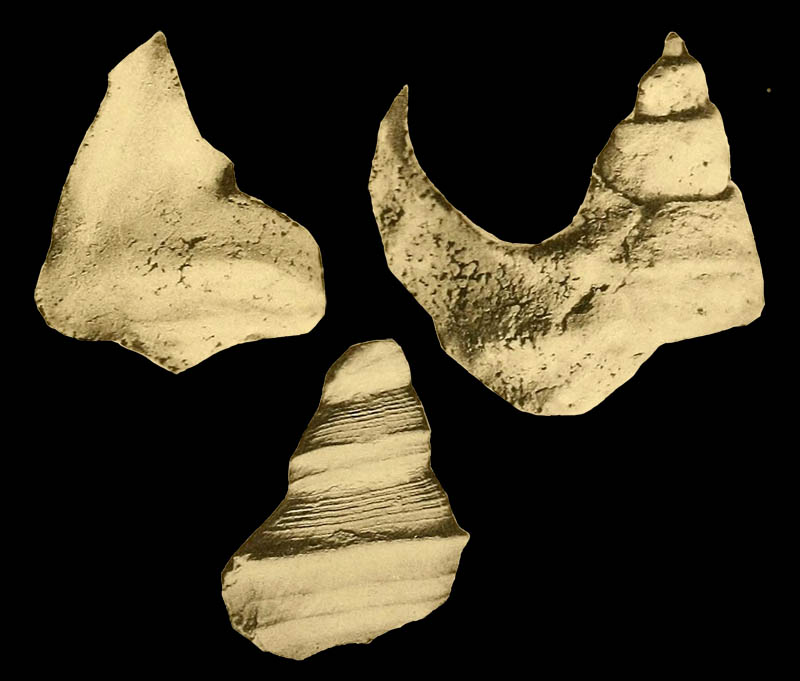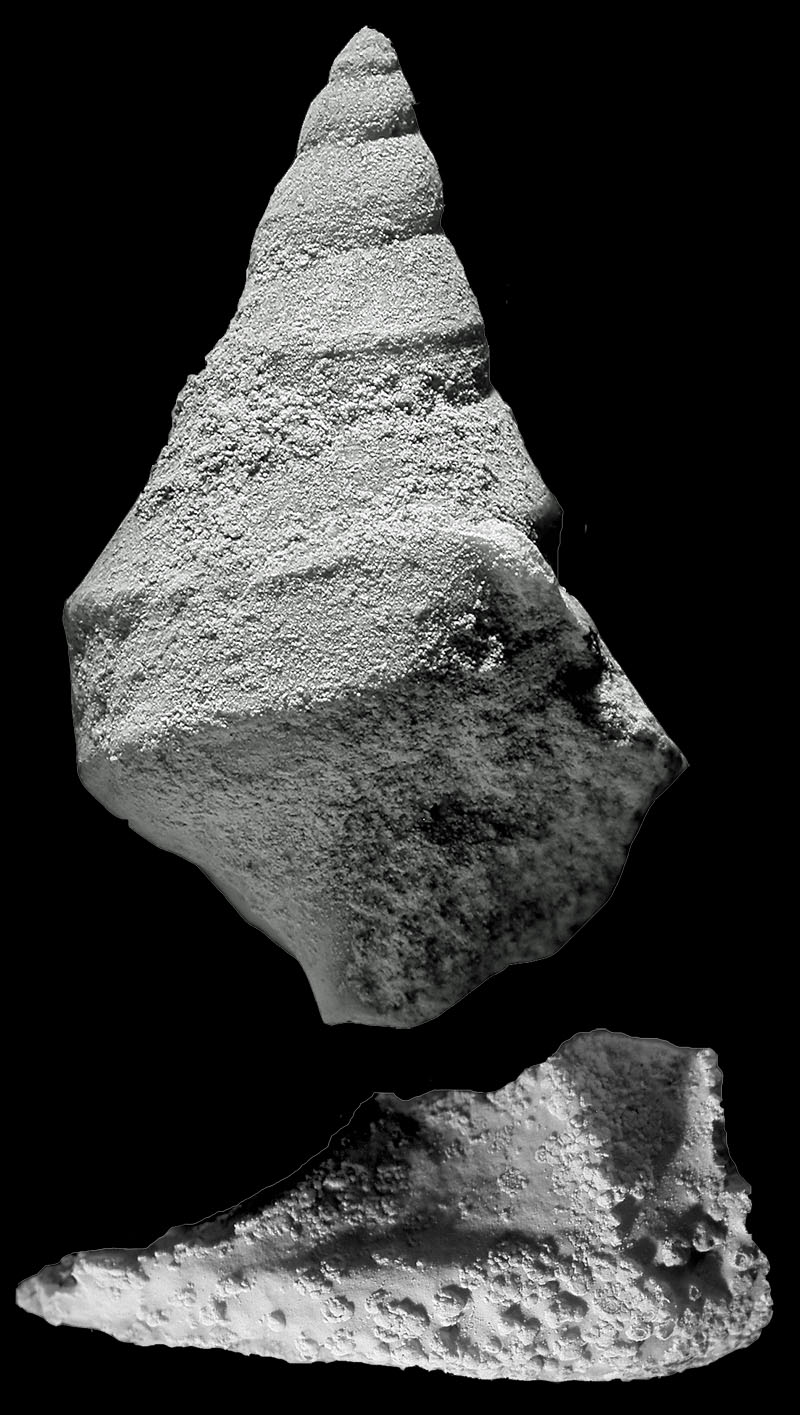EmphasizedStromboidea
Original Description of Peruchilus culberti by Olsson, 1931, p. 187 (90):
- "Shell of medium size, broadly conic, the spire of medium height with rapid, enlarging whorls; nucleus unknown; subsequent whorls 3, 4 or more, those of the spire straight-sided to slightly convex, angled about the middle; sutures linear, straight; body-whorl large and strongly keeled about the middle; the base is angled or carinated, this basal or peripheral carina lying submerged in the sutures of the earlier turns; on the internal molds or partly weathered specimens, the body-whorl is broadly biangulated with a wide flat band or channel between the central keel and the peripheral carina; the slope above the central keel is straight and marked with 8 or 9 spiral threads between which are finer secondaries; the broad area between the central keel and the basal carina carries a single strong central spiral thread and fine, minute spirals on each side; outer lip expanded as described above, slightly adnate to the penultimate whorl and with a produced posterior extremity; anterior side of lip slightly expanded, rounded; base flattened to impressed concave with a short anterior canal."
Dimensions: "Height 27mm.; greater diameter 30mm.; vertical length of lip 24mm."
Etymology: "The species is named for Mr. V. Culbert, Geologist who collected most of the Bowl sandstone specimens in 1922."
Peruchilus culberti Olsson, 1931, pl. 14 (25), fig. 8, 12, 13
Locality and Geologic Occurrence: "Chira formation, north of Casa Saman. Mancora formation, Bowl sandstones about 2 miles northeast of Sullana."
Comment Olsson, 1931, p. 187 (90):
- "This species is most common as internal molds in certain hard sandstones belonging to the Mancora formation near Sullana. A single specimen collected in the Upper Chira shales north of Casa Saman has retained part of the external shell and on which most of our knowledge of the finer sculptural details of the surface is based. The lip or wing is unfortunately not preserved on this specimen. On the internal molds, the body-whorl is broadly biangulated by 2 equal carinas or ridges. On the perfect shell, the upper ridge is most pronounced forming a true keel."
Peruchilus cf. culberti Olsson, 1931; Otuma Formation, Oligocene; Paracas, Ica Region, Peru; Coll. Tom DeVries; Copyright Tom DeVries
Comment by Tom DeVries:
- Regarding info about Peruchilus - there is only Olsson's original study and my specimens from the Otuma Fm. of southern Peru (probably 38-36 Ma). That's all that is known. It probably lived in the inner to mid-shelf - not intertidally, not in slope-depth water.
References:
- Olsson, A.A., 1931: Contributions To the Tertiary Paleontology of Northern Peru: Part 4, the Peruvian Oligocene, Bulletins of American Paleontology 17(63),


